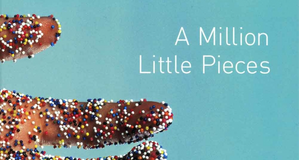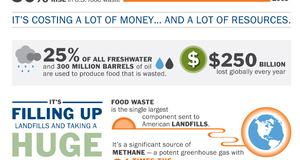Consumption: The Role of Eating in Rehabilitation in the Memoirs "A Million Little Pieces" and "Two Kinds of Decay"While the act of eating has personal implications for the agent eating—as with the aforementioned impact on physical appearance and performance—it is nonetheless fundamentally not a self-contained act. To eat is to bring things together—food and people. As Leon Kass’ The Hungry Soul, a philosophical exploration of the meaning of food, notes, “eating is not a pure and self-contained activity of the agent, like running or swimming or flying; the word eating is also, and always, a transitive verb as well. To be eating is necessarily to be eating something—something other and in the world.” (Kass 1994) Here, Kass demonstrates that even if an eater is eating alone, they must be involved with some other direct object, if at least grammatically. By eating, the eater directly interacts with a direct object, “we do no become the something that we eat; rather the edible gets assimilated to what we are.” (Kass 1994) This possibly explains why Frey often finds deep comfort and confidence in the generic and unpleasant cafeteria food. Displayed in his simple depiction of eating a bowl of mushy oatmeal: The oatmeal is gray and mushy and disgusting but the sugar tastes good. It soaks into my tongue and its sweetness is the first taste I have recognized aside from whiskey or wine or smoke or vomit since the evening of my accident. I like the sweet and the taste means that some of my senses are coming back if I stay here. I’ll be able to taste and smell and experience normal sensations that normal people experience every day. If I stay. (Frey 2003) (57) Frey eats the oatmeal, regardless of the fact that he is disgusted by its appearance and is surprised by its taste—also, because he can simply taste it. The interaction of the sugary taste of the oatmeal on Frey’s tongue then comes to represent the power of eating as a sense experience. In eating and tasting the oatmeal, Frey is reminded of the last things he tasted, all of which are bitter—whiskey, wine, smoke, and vomit—yet the sugar is sweet. The sweetness reminds Frey of the benefits of sobriety, that he will “be able to taste and smell and experience normal sensations that normal people experience.” (Frey 2003) Furthermore, this eating experience indicates the positive progress in his rehabilitation as well reinforcing, for Frey, the value of normal sense experiences. Frey does not eat his oatmeal alone; he is with others in the cafeteria, which functions as a significant place of social exchange for Frey. Here, Frey sees that the women are divided into tables “according to Socioeconomic Class” while “divisions among the men are not made by class, but by drug of choice.” (Frey 2003) The cafeteria is a microcosm, for Frey, remembrance of his life in the outside world where he probably saw a world where women group themselves by class, whereas the men, drug addicts, and drug dealers likely identified themselves by the drugs they used or sold.As he progresses in his stay, however, Frey notices the consumption habits of the addicts. When he observes the addicts’ need for constant outside stimulation, he repeats the phrase, “Addiction needs fuel.” (Frey 2003)Food is of course a sort of fuel, but it is more than simply this, as Kass says, “unlike a machine, to nourish means to maintain as well as to fuel, and the organisms is self-maintaining and self-repairing.” (Kass 1994) For the addict, though, as Frey finds, food and the act of eating serves less as something to be experienced, savored, and enjoyed, but instead, functions solely to provide the addict with fuel. This is of course reflected in Frey’s own eating habits early on; “I don’t look at what it is and I don’t care what it is or what it tastes like. It doesn’t matter.” (Frey 2003) Later, when Leonard holds a fest for everyone, Frey shows a degree of self-control, unlike his fellow peers—“They are all Addicts and Alcoholics and the food is their fuel. I watch some go back for a second, I watch some go back for thirds. I want food myself but watching this is beautiful.” (Frey 2003) Frey demonstrates that he prefers to no longer eat food as if it were fuel or an escape; that even while others around him lost control, he could control himself without reacting to his compulsory “urge to eat everything I see, to eat myself into a coma, to eat so that I no longer feel anything, to eat until I’m beyond feeling anything.” (Frey 2003) This signifies Frey’s positive recovery, not only in his ability to demonstrate self-control, but also, because the hedonistic desire to over-consume has transformed into a help behavior necessary for self-maintain. Like Frey, who says in his addiction that he felt no hunger for food; that “food was always an afterthought,” so too, when Manguso becomes ill, does her foremost attention move away from food to her blood transfusions and drug intake. Although, for Manguso this is because “With my own blood in me, I couldn’t feel, and I couldn’t move, but with other people’s blood in me, and with chemicals in me, I could do those things.” (Manguso 2008) The role of food and medicine become interchangeable, for Manguso, they come to mimic each other in form, while at times prohibiting, distorting, and enhancing her normal eating experiences. For example, the role of the apheresis nurse, Tabitha, is not only thawing and preparing the albumin for the apheresis sessions, but also, to come ready “with a bag of wintergreen candies.” (Manguso 2008) Manguso takes it as a good sign that with steroids she “was finally able to eat a whole meal and no longer needed two protein drinks per day“. (Manguso 2008) The most memorable of these experiences included being able “to go out to a restaurant,” (Manguso 2008) and making “myself breakfast.” (Manguso 2008) The memory she best describes is “how happy my mother was to cook a hamburger for me. I remember eating it. The ketchup, the mustard—I can taste the condiments.” (Manguso 2008) At first, the steroids appear to be the prefect solution to her problems, not only because she has the ability to feed herself independently, but also because of the pleasure of being able to participate in those important social events, which usually revolve around some form of cooking and eating. This eating experience is not altogether normal, though, as indicated by her heightened ability to taste the condiments, which foreshadows the future consequences of her unhealthy duration on the steroids. Nonetheless, her ability to eat for herself serves as a positive marker yet again later in the memoir when she is attending the Iowa Writer’s Workshop in August 1997. There she describes her habit of walking “all the way up Gilbert Street to the Asian grocery store where I could get Korean noodle bowls.” (Manguso 2008) It is “on maybe [her] fifth trip to the grocery” (Manguso 2008) that Manguso realizes there is a plasma donation center and is once again forced to come face-to-face with her illness and recovery. The plasma center reminds Manguso that once, instead of going to the Asian grocery store for the replenishment and nourishment of her body, she had to go to the hospitals to be hooked up to an apheresis machine. The ability to eat when, where, with whom, and what she wants, is not only a part of a normal healthy life, but it is also a key component of why Manguso wants to be healthy at all. While it may appear that a store-bought bowl of noodle soup does not show much engagement with ones’ food, it should be noted the great care with which Manguso takes when preparing the meal, especially in comparison with other ubiquitous American fast food. The multiculturalism of Manguso’s meal and her simple ability to walk to the grocery store to get it, reminds Manguso of life in New York, where a wide range of foods from different cultures is always close by and readily available. She then describes in detail the delight she takes in preparing this undemanding dish, “cooking the oily noodles” and “mixing them with a can of tuna fish.” (Manguso 2008) Indeed, Manguso’s experience in Iowa City is in many ways demonstrative of how modernity has altered the typical American meal away from local, home-made meals, into a sea of industrial foods, an ever-expanding selection of pre-made options. It is in strong contrast to the eating behaviors Jimmye Hillman depicts of the food culture in southern America in the early half of the 20th century, which consisted mostly of a rural farming lifestyle and a diet based on plants. By comparison, Manguso’s Iowa experience is very modern and urbanized. As Hillman says, “[they] bought only a very small portion of our food in the Depression years. These days it is all supermarket and restaurants.” (64) (Hillman 2009) Food has increasingly become more institutionalized insofar as we seek foremost in our eating experiences efficiency and consistency: Eating industrial food is inexpensive and convenient. It allows you to have the same exact food experience in New York City as in a far-away Iowa City. As Michael Pollan argues in his nonfiction work The Omnivore’s Dilemma the rise of industrialized agriculture has dramatically impacted the American grocery store and farms, and also has had a significant effect on our relationship with our food, thereby reducing our meals to far more limited and empty experiences. The abundance of food caused by this industrialization, Pollan points out, “has been a boon to humanity (allowing us to multiply our numbers), but not an alloyed one.” (Pollan 2006) For instance, as Pollan attempts to describe the phenomenological experience of eating McDonalds: “I said before that McDonald’s serves a kind of comfort food, but after a few bites I’m more inclined to think they’re selling something more schematic…so you eat more and eat more quickly, hoping somehow to catch up to the original idea of a cheeseburger or French fry…and so it goes, bite after bite, until you feel not satisfied exactly, but simply, regrettably, full.” (Pollan 2006) His description of the fast-food experience is akin to Frey’s self-depiction of his eating behaviors, which sought “to take as much as I can as fast as I can.” (Frey 2003) The addict’s need for fuel—the need to consume blindly out of an escapist impulse to remove one’s self from an experience by losing the self in the act of consumption—is what Frey himself implies when he repeats the phrase “Get something. Fill me.” (Frey 2003) The treatment of food within this framework of addiction is precisely the way in which Pollan describes his McDonald’s experience. Fast food represents the food culture of addicts, people who want nothing from their eating experiences, except that it signify something other than themselves, that it serves as fuel, that it can function as an escape. It is “a hallmark of the industrial food chain,” Pollan reminds, “which breaks down the family into its various demographics and markets separately to each one: Together we would be eating alone together, and therefore probably eating more...These days 19 percent of American meals are eaten in the car.” (Pollan 2006) As Pollan demonstrates there is less connection between our food and us than ever before, the social aspect has been reduced to “eating alone together,” and the act has been deduced to something that can be handled in transit, an almost nearly forgettable part of our daily life, with little connection to who we are or where we are. Our eating now more closely resembles the smooth fluidity of Manguso’s aphersis treatments than anything naturally structured around the food source itself. The health consequences of proximity to food fast restaurants have been empirically show to have a positive correlation with weight gain and obesity in young teens and adults. (Currie, Vigna, Moretti, Pathania 2010) Obesity is a disease that is born of out overconsumption, which indicates addictive eating behaviors. The transformative properties of food extend beyond the corresponding physical changes and functioning of the body, as well as the taste of the food, or its role as a social facilitator; rather, the overall effect of feeding is for nourishment and self-maintenance. Food provides us with the most essential of needs, which in the case of an autobiography, would be to aid the narrator toward some personal moral lesson, or redemption. In the case of Frey, this would be some signal of future sustained sobriety, which Frey’s own memoir displays as something of a process. As Allen Borst shows in his comparison of Frey’s memoir to Thomas De Quincey’s classic, “Confessions of an English Opium-Eater,” Frey’s memoir “presents recovery as a drama in its own right.” (Borst 2010)Continued on Next Page » Suggested Reading from Inquiries Journal
Inquiries Journal provides undergraduate and graduate students around the world a platform for the wide dissemination of academic work over a range of core disciplines. Representing the work of students from hundreds of institutions around the globe, Inquiries Journal's large database of academic articles is completely free. Learn more | Blog | Submit Latest in Literature |


















